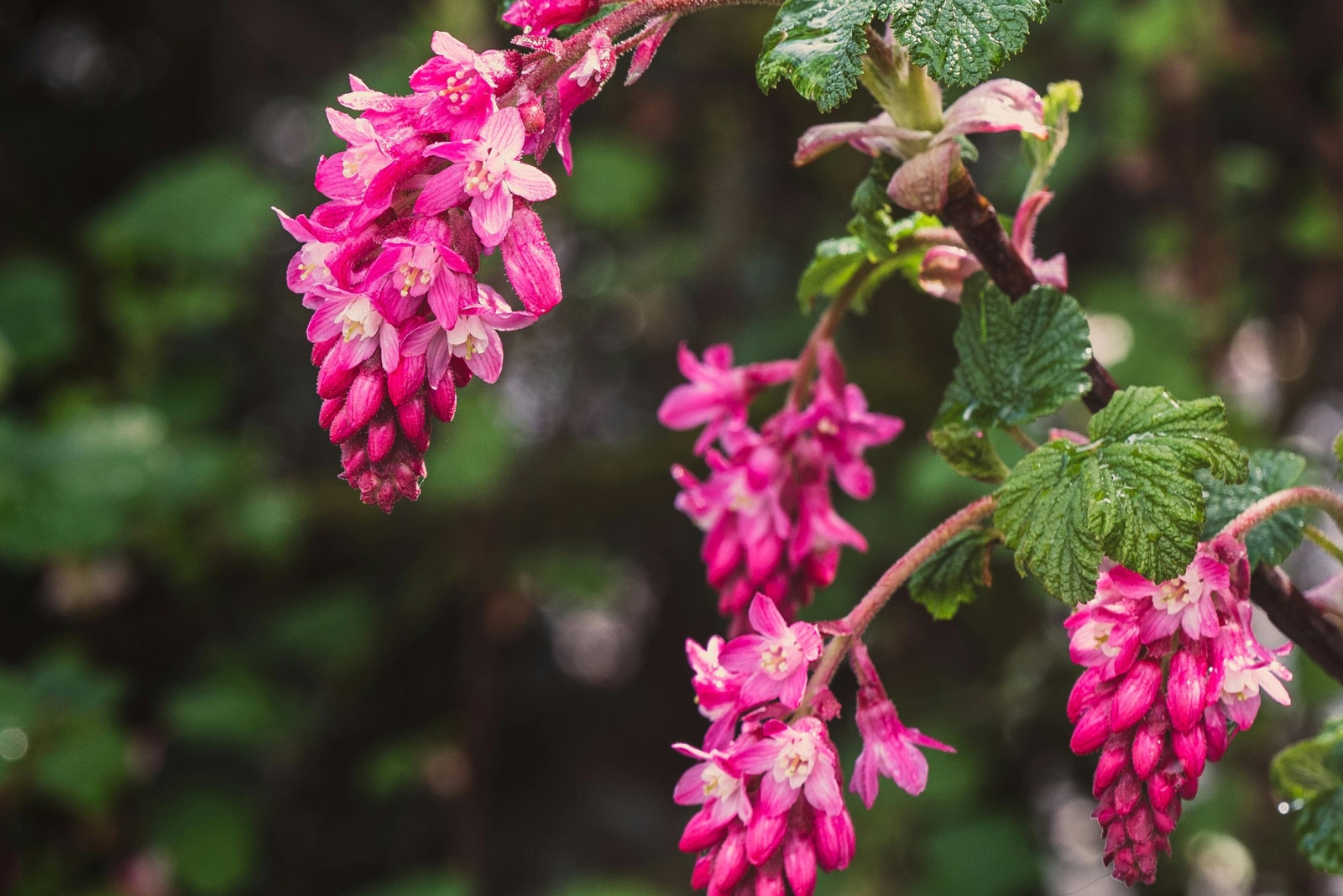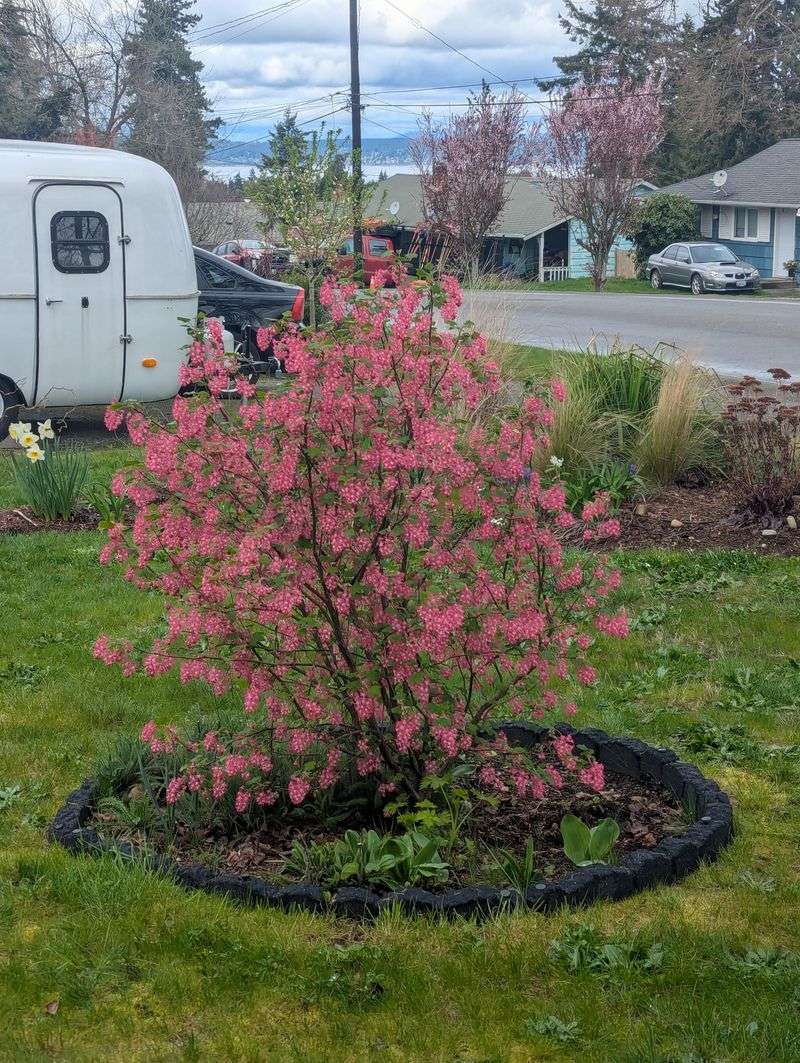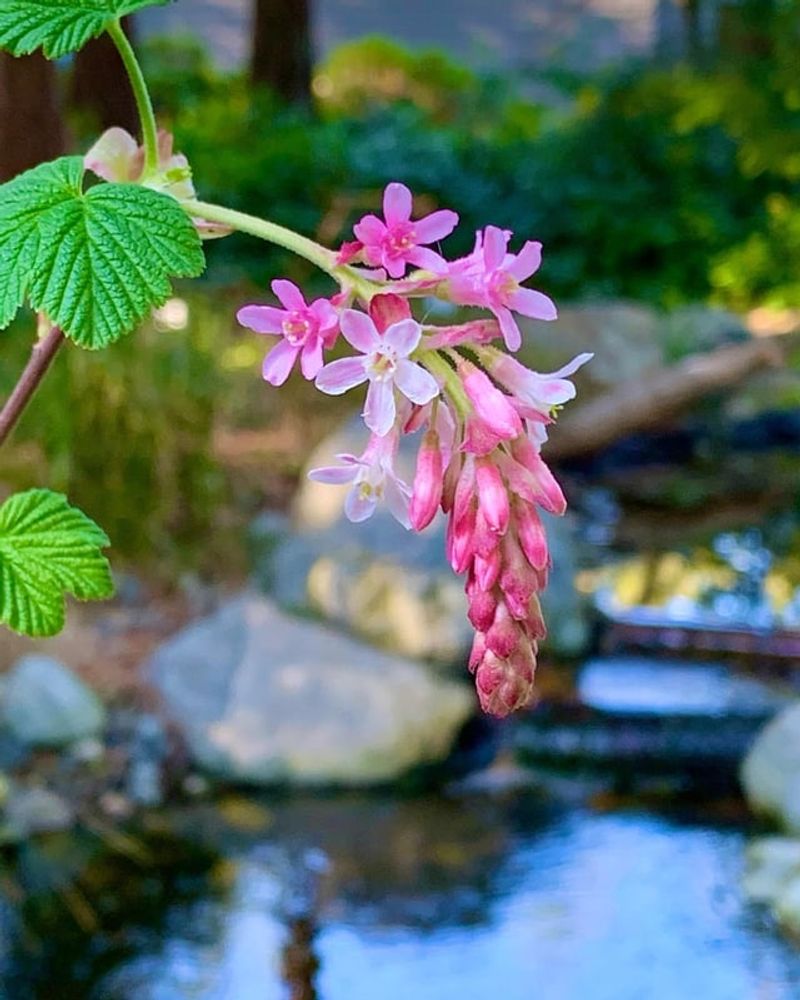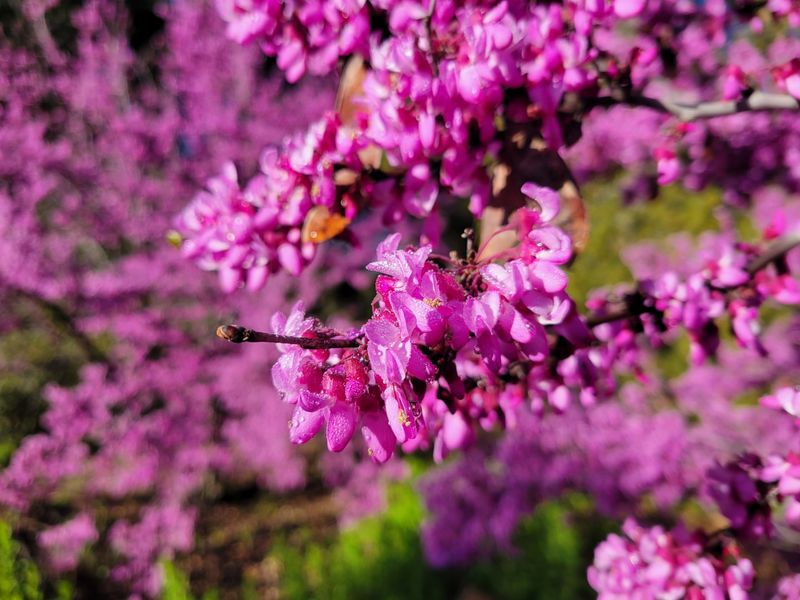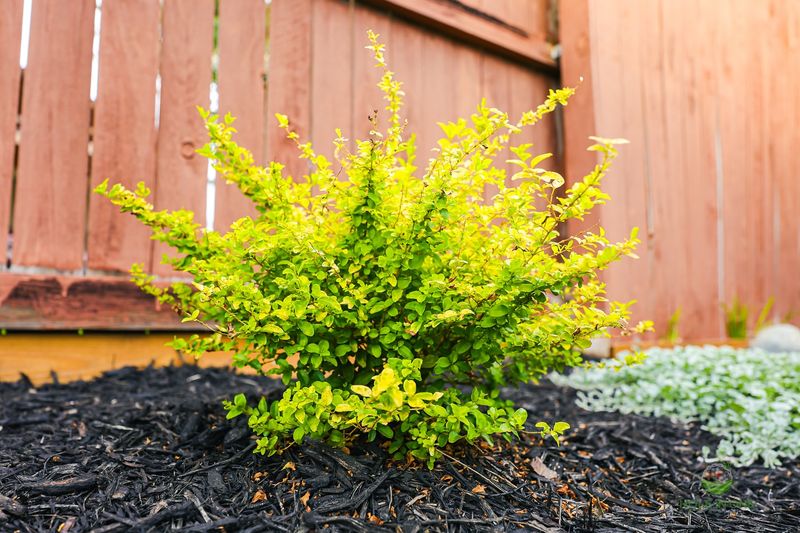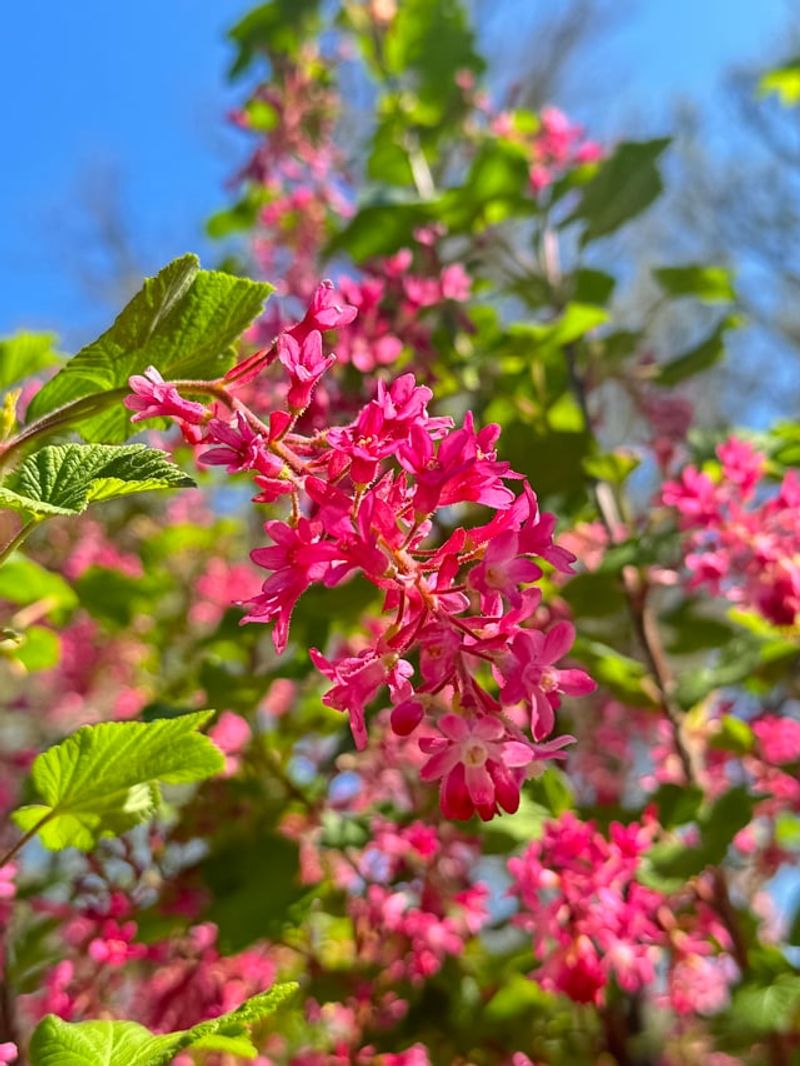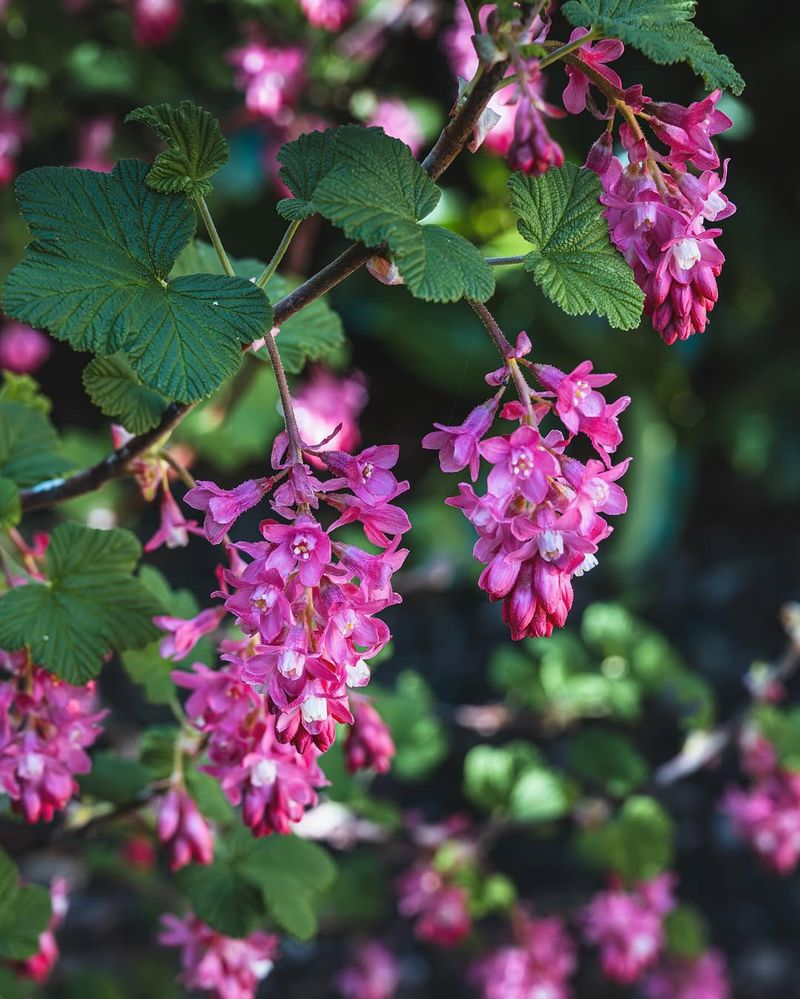Gray skies don’t have to mean dull gardens in Washington. One hardy shrub bursts into pink clusters just as winter fades, bringing early color and a rush of pollinators to waking landscapes.
It thrives in cool, damp conditions and asks for little in return. That reliable burst of spring brightness comes from the flowering currant.
1. Native To The Pacific Northwest Region
Long before settlers arrived in Washington, flowering currant was already thriving in forests and along stream banks throughout the region. Native plants like this one have spent thousands of years adapting to local rainfall patterns, soil types, and temperature swings.
Choosing native species means less work for gardeners since these plants already know how to handle what Mother Nature throws their way. Your flowering currant won’t need constant pampering or special treatments to look its best each season.
2. Hummingbirds Cannot Resist The Blooms
Watch your Washington garden come alive when hummingbirds discover your flowering currant in early spring. These tiny acrobats arrive hungry after their long migration, and the nectar-rich pink flowers provide exactly what they need to refuel.
Rufous hummingbirds and Anna’s hummingbirds will visit dozens of times each day, zipping between branches with incredible speed. Plant your shrub near a window where you can enjoy the show without disturbing these amazing aerial performers.
3. Blooms Arrive In Late Winter Or Early Spring
February and March can feel endless in Washington, but flowering currant breaks the monotony with its cheerful display. Drooping clusters of tubular pink flowers appear on bare branches before most other plants wake up from winter dormancy.
Each cluster contains dozens of individual blooms that last for several weeks, giving your yard much-needed color when everything else looks drab. Neighbors will definitely ask what that gorgeous pink shrub is when they walk past your garden during those early spring days.
4. Drought Tolerance Makes It Low-Maintenance
Summer water bills won’t skyrocket because of this shrub. Once established after its first year or two, flowering currant handles dry spells like a champion without constant irrigation.
Deep roots reach down to find moisture even when the surface soil turns dusty and cracked. An occasional deep watering during extreme Washington heat keeps it happy, but you won’t need to drag hoses around every few days like with fussier plants that demand constant attention throughout the growing season.
5. Grows Well In Sun Or Partial Shade
Finding the perfect spot for new plants can feel like solving a puzzle, but flowering currant makes placement decisions easy. Full sun locations produce the most abundant blooms, creating a spectacular spring display that stops people in their tracks.
However, shadier spots under trees or along north-facing walls work fine too, though you might see slightly fewer flowers. This flexibility means almost every garden has room for at least one of these versatile beauties somewhere in the landscape.
6. Reaches Six To Ten Feet Tall At Maturity
Planning ahead prevents crowding problems later. A young flowering currant might look small at the nursery, but give it three to five years and it transforms into a substantial presence in your Washington landscape.
Most mature specimens reach somewhere between six and ten feet in both height and width, creating an impressive rounded form. Space your shrub accordingly, keeping it several feet away from walkways, fences, or other plants so it has room to spread out and show off its natural graceful shape.
7. Edible Berries Feed Local Wildlife
After the pink flowers fade away, small blue-black berries develop by midsummer. Birds including robins, towhees, and waxwings flock to feast on these nutritious treats, turning your shrub into a popular wildlife restaurant.
Humans can technically eat the berries too, though most Washington people find them quite tart and better suited for jams than snacking. Watching the wildlife activity makes up for not harvesting the fruit yourself, as your garden becomes an important food source for creatures sharing your neighborhood.

